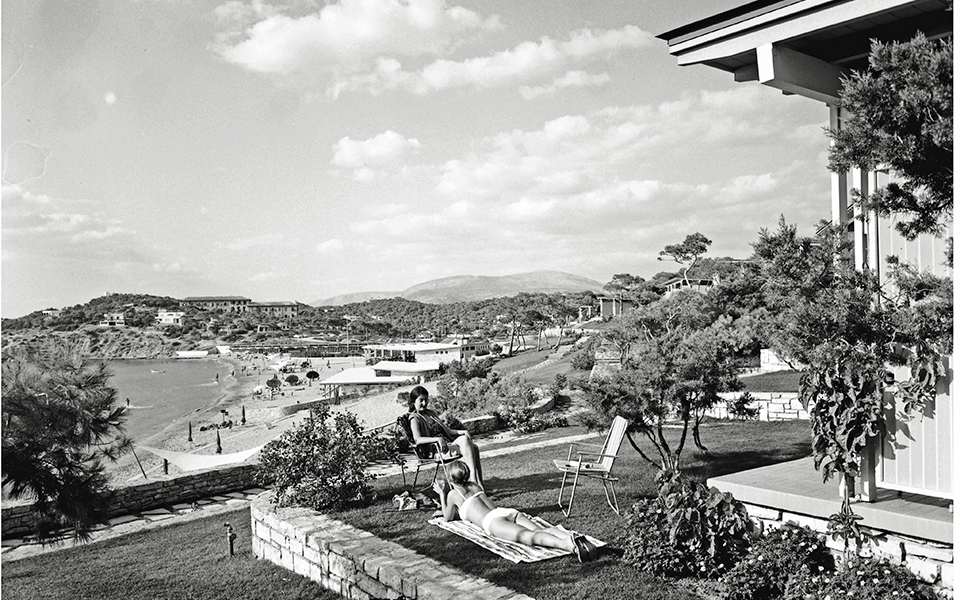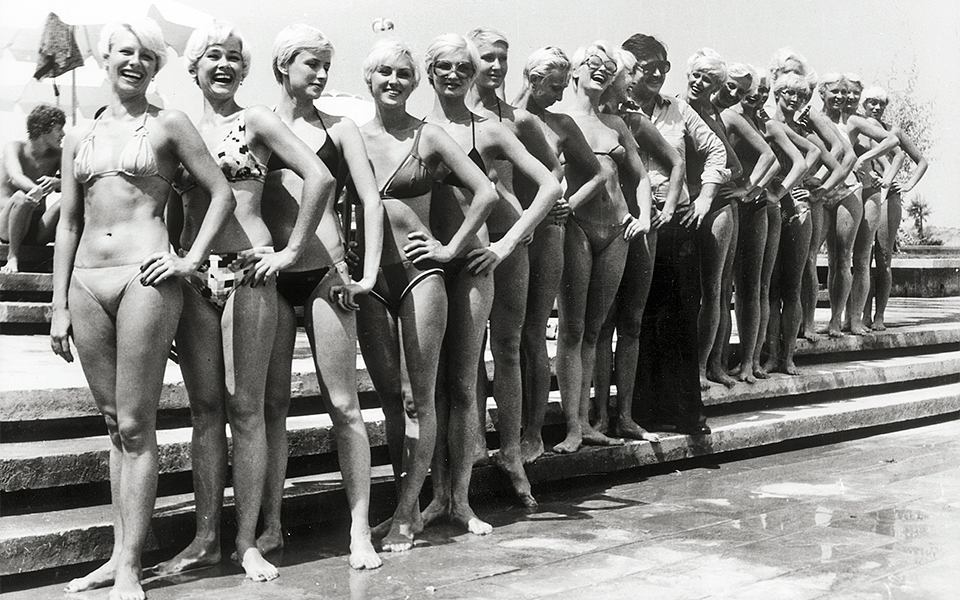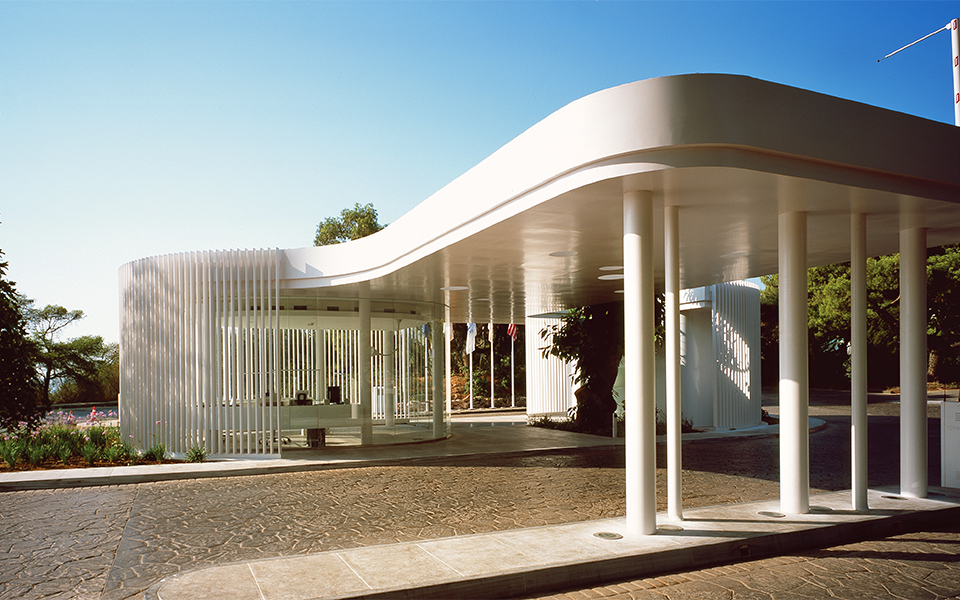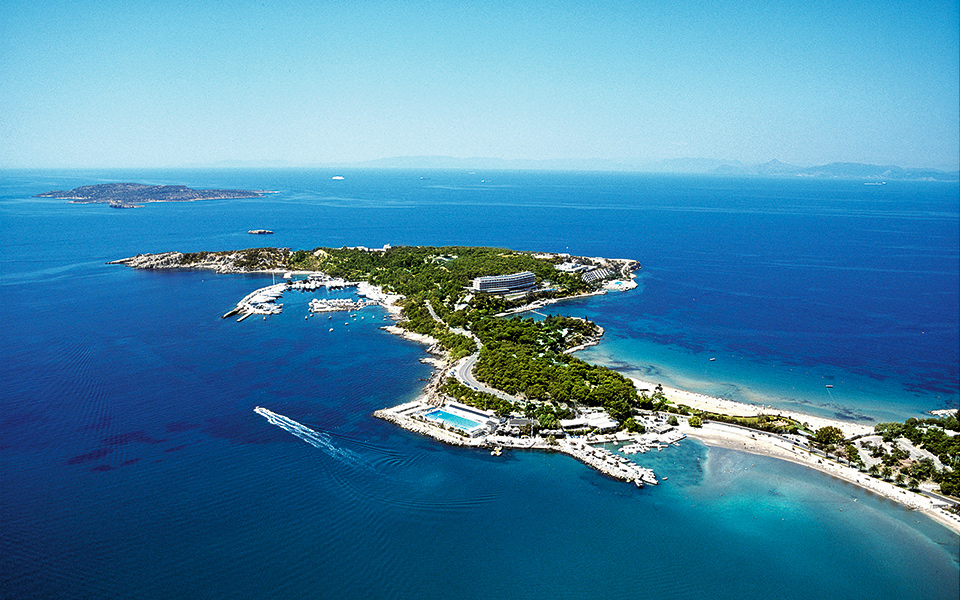A ripple of excitement swept through the calm as Brigitte Bardot stepped onto the beach wearing a tiny bikini, high-heeled sandals and an enormous sun hat.
Statesman Constantine Karamanlis had a favorite cabana and in the evenings would order a whisky followed by a meal of one boiled egg, a plate of steamed zucchini and grilled fish.
Socialist leader Andreas Papandreou preferred lighter dishes that could be prepared quickly, and screen icon Melina Mercouri had a fondness for fresh apple with caramelized almonds and mastic-flavored ice cream.
Frank Sinatra breakfasted on Egyptian pistachios and coconut milk and one night had to sneak out the back to avoid a throng of paparazzi at the entrance.
Shipping magnate Yiannis Latsis liked to handpick the tomatoes that would go into his salad and Egyptian President Anwar Sadat took home the recipe for eggplant dip.
King Saud of Saudi Arabia would hand out gold watches instead of tips and reserve the entire floor of the Nafsika Hotel for himself and his harem, once also ordering a truckload of flowers to be brought in to decorate his private suite.
Russian ballet star Rudolf Nureyev could be seen boogying into the wee hours at the 9 Muses discotheque, while Tony Curtis was turned away at the door of the Club House one night and only allowed entry to the restaurant after putting on a tie.


These are just some of the stories of the famous personalities that have graced the Astir Palace resort in the southern Athenian suburb of Vouliagmeni. Among them: Richard Nixon, Mikhail Gorbachev, Francois Mitterrand, Helmut Schmidt, Nelson Mandela, Jimmy Carter, Ari Onassis, Jackie Kennedy, Paloma Picasso, Princess Soraya of Iran, John Wayne, Telly Savalas, Sean Connery, Anthony Quinn, Ronaldinho, Lady Gaga and, most recently, Barack Obama. Businessmen, politicians, famous personalities of the arts and letters, athletes, Hollywood stars and starlets all enjoyed a sojourn at the “Athens Riviera” because Astir Palace was the place to be, a landmark and symbol of Greek hospitality: a private 30-hectare peninsula just a short drive from the city center, an oasis of pine trees and blooming flowerbeds, crystal bathing waters and gorgeous views, with services to cater to the most discerning visitor.
The fascinating history of Astir Palace (which opened in 1958 and evolved into a major city resort in the 60s that played a key role the Greek tourism boom) is encompassed in a wonderful coffee-table book filled with insights and rare photographs, of which just 1,000 collectors’ copies were recently printed for Astir Palace Vouliagmeni SA, funded by National Bank.

“We were aiming for 160 pages but reached 266 so we could include as many photographs and as much information as possible. The project took two-and-a-half years to produce,” says Yiannis Lagonas, publisher and owner of the firm Plus More 360°. “The goal was a retrospective of Astir Palace’s history before it embarks on a new era. It is a testament not just for the new owners, but also for the future generations,” says Lagonas, referring to the luxury resort’s recent sale by the Greek state to an Arab-Turkish consortium.
“We have to thank Katerina Florou for her huge contribution, as she had a valuable archive that we were able to use. The texts were written by Emmanuella Nikolaidou based on archival material and the testimonies of former staff,” explains the publisher.
The narratives provided by former CEOs, managers and other staff, from beach supervisors to chefs and servers, are indeed fascinating, but for the publisher, the most interesting chapter of the resort’s history is the 1970s.
“Astir Palace was unique at the time, a paradigm that spearheaded the drive to develop Greek tourism,” says Lagonas.

The luxurious edition, with a black cover bearing only the logo “A” and the word “Legacy,” goes back to the start of the resort’s history in the late 20th century. The area of Vouliagmeni at the time belonged to a monastery, which started building small rental units around the lake, already renowned for the curative properties of its waters. By 1930, the monastery had built 30 rooms and gradually started adding cafes and restaurants in the vicinity, attracting the interest of investors looking to build hotels and entertainment venues. The advent of World War II, however, put all development plans on hold.
As Greece started to recover from the aftermath of the war, the state decided to focus more systematically on tourism. The Greek National Tourism Organization (GNTO), which had been founded in 1929 but had remained largely inactive until then, was assigned a more proactive role, particularly thanks to Athens’s first direct air link to a European capital in 1950, which saw the airport at Elliniko on the southern coast welcoming the city’s first foreign guests.
The merger in 1953 of National Bank with Bank of Athens resulted in the country’s first powerful credit institution and the head of National Bank soon saw the southern coast’s potential as a prime investment opportunity.

The ASTIR company was founded in 1954 and four years later Parliament approved the peninsula’s development, commissioning the plan to architects Emmanouil Vourekas, Periklis Sakellarios, Prokopis Vasileiadis and a then young Constantinos Dekavallas.
They designed a complex that maximized the plot’s natural advantages and recommended a full revamp of the underutilized beachfront.
The “People’s Vouliagmeni Plage” was inaugurated in August 1960 and soon became a favorite among Greece’s growing middle class and celebrity culture. The first 76 bungalows, or cabanas, opened in 1961 and the first water-skiing center in 1966, a real novelty for Greece at the time. Another eight bungalows were added in 1969, while the hotels Arion, Nafsika and Aphrodite were inaugurated in 1967, 1979 and 1984 respectively. The last has been out of operation for several years.
A New Era
Astir Palace is now poised to enter a new chapter of its history, with its new owners (Jermyn Street Real Estate Fund IV LP and Apollo Investment, which includes the state investment funds of Abu Dhabi and Kuwait, Arab investors and Turkey’s Dogus Group) planning to unveil the revamped resort in the spring of 2018.
The 230-million-euro project includes, among others, a complete overhaul of the two hotels and the bungalows, a leisure/sports park on the southern tip of the peninsula, a larger marina and the replacement of the Aphrodite Hotel with 13 luxury villas.
The sale of Astir Palace marks the end of a stellar chapter in Greece’s tourism development, one that helped the country become a world-class destination. Now we can only hope that its future will live up to its past.
* This article first appeared in K, Kathimerini’s Sunday supplement.












